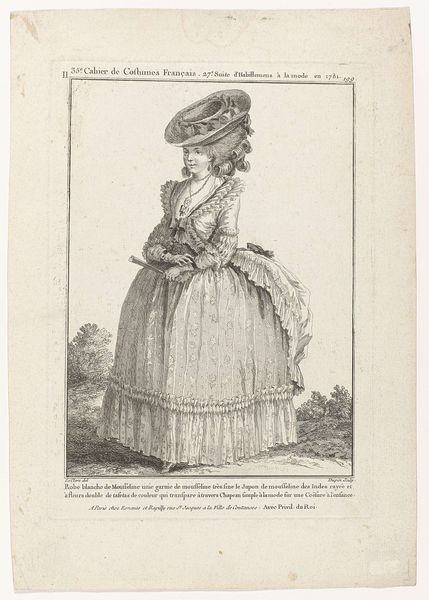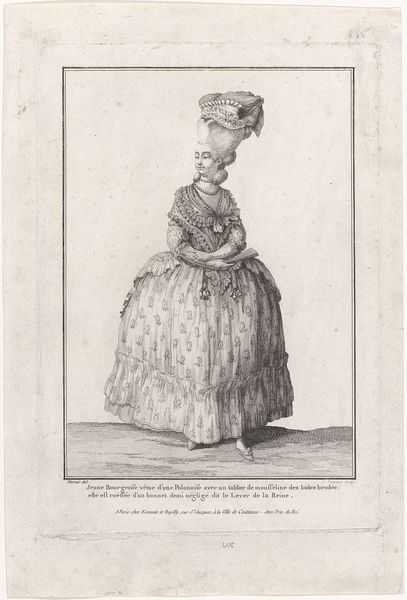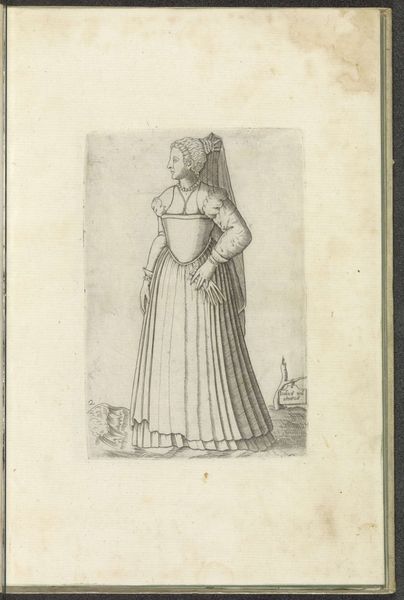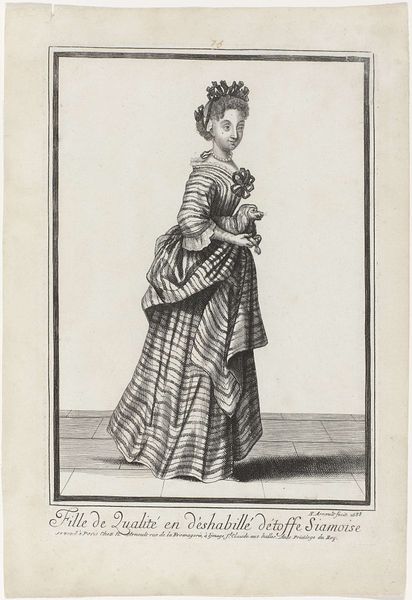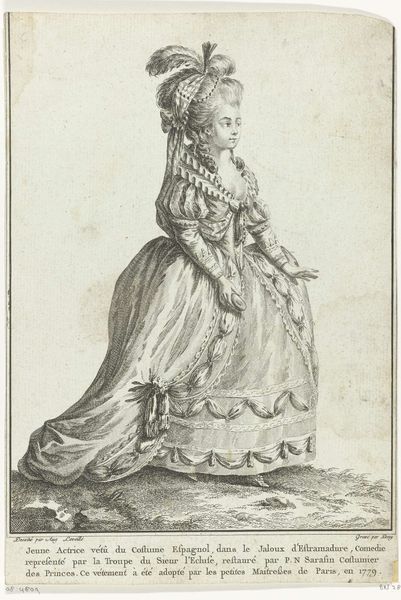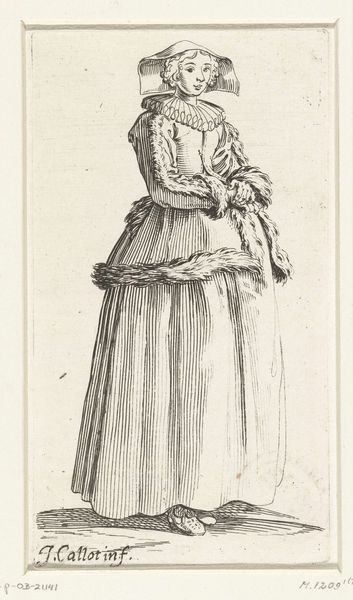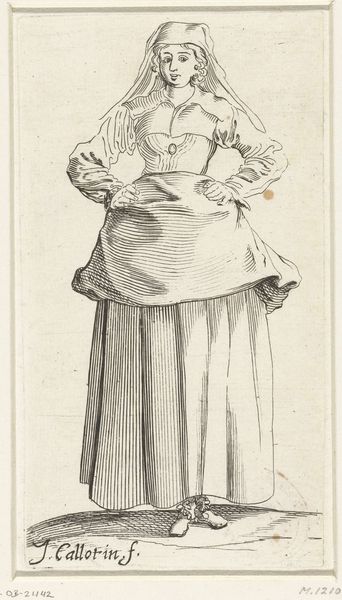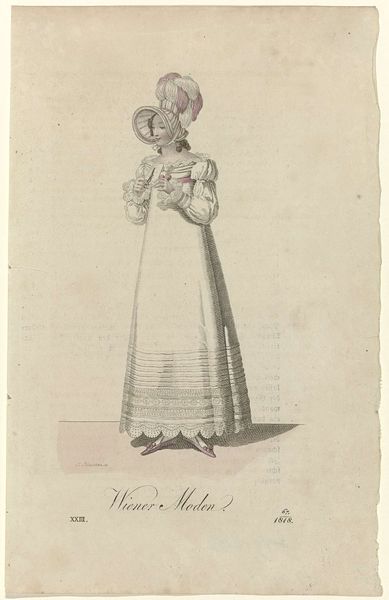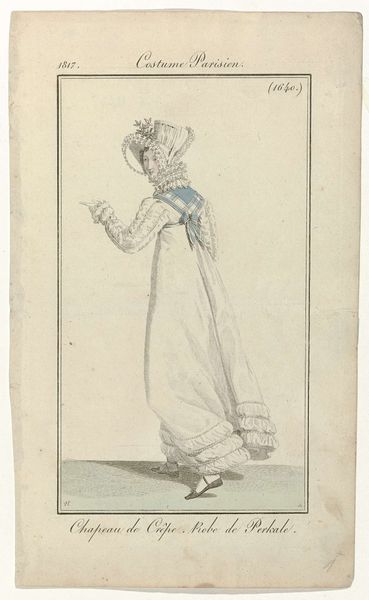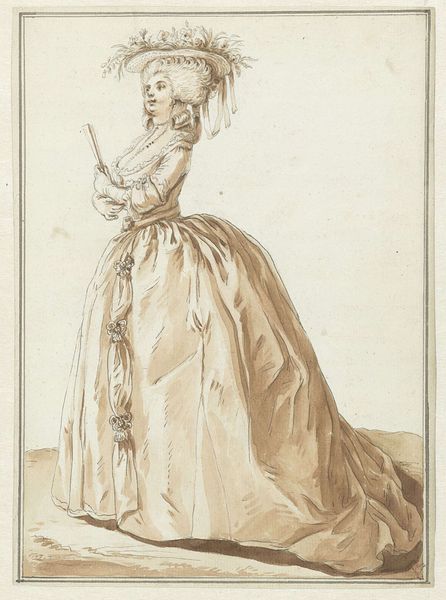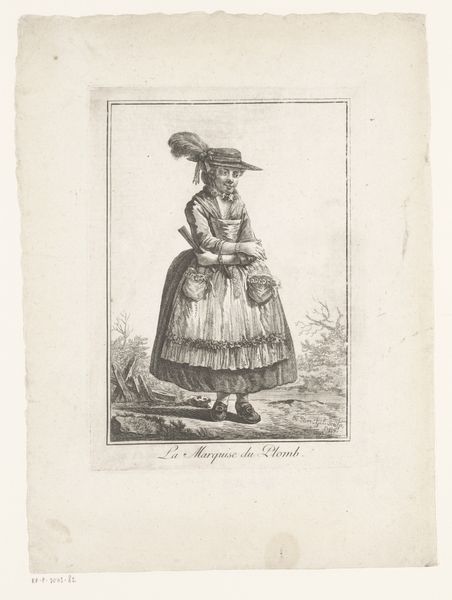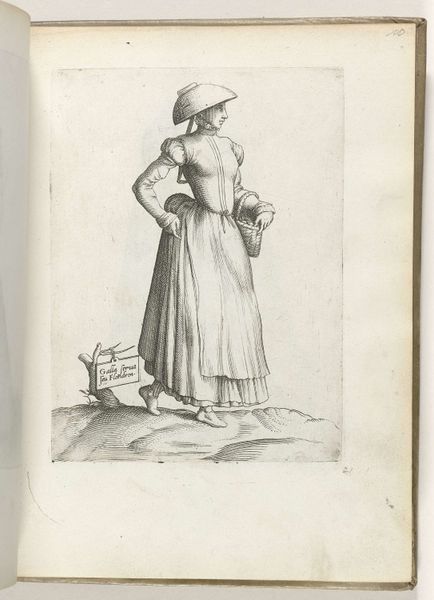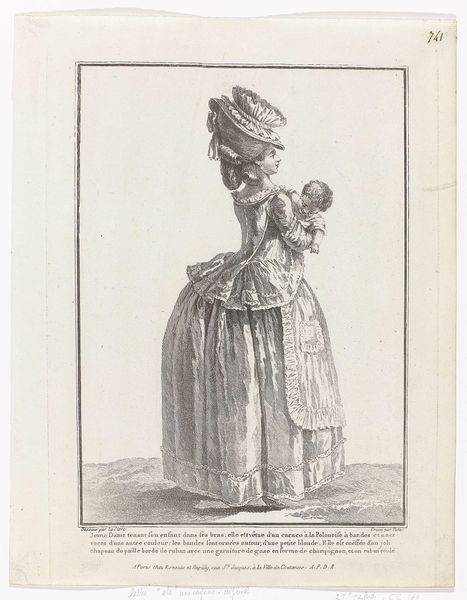
Dimensions: height 308 mm, width 211 mm
Copyright: Rijks Museum: Open Domain
Editor: This is "Jeune Demoiselle en Carracot de Taffetas des Indes (...)," a print made by Martial Deny around 1780-1785. It feels very formal and decorative; the details in the dress are so intricate. What symbols or stories do you see embedded in this image? Curator: The engraving technique itself evokes a specific kind of looking, doesn't it? Everything rendered with precision and care, the material itself is precious. More to the point, have you noticed the Indian taffeta dress mentioned in the title? At the time this print was made, printed images like this helped disseminate not just fashion trends but, literally, material culture. The 'Carracot' refers to a specific style popular at the time. Editor: So, it's about showing off this very fashionable, very global fabric? Curator: In part. But consider: what does it *mean* to depict a 'young lady' adorned in a fabric sourced from India? It speaks to colonial trade, desire, and an appropriation of 'exotic' beauty. The image performs a certain kind of power. Notice also that she holds a letter... it reinforces a message of love and the domestic sphere. Editor: It’s interesting to consider how much the image is performing a colonial gaze. It isn't just a picture of a pretty dress. Curator: Exactly. Consider how fashion, a seemingly frivolous topic, encodes deep social and political meaning and is designed to remind women of the appropriate roles that they should assume. A young girl like her probably wants to grow up, look beautiful, attract a man of status to maintain her power in society. Fashion also suggests women be consumers who have the power to make or break popular designers. Do you now understand some of the encoded messages of colonialism, fashion and roles of women this period? Editor: I do, absolutely. I had thought of this as a straightforward fashion plate, but you've highlighted the many layers of cultural context that influence the work and its ongoing symbolism.
Comments
No comments
Be the first to comment and join the conversation on the ultimate creative platform.
